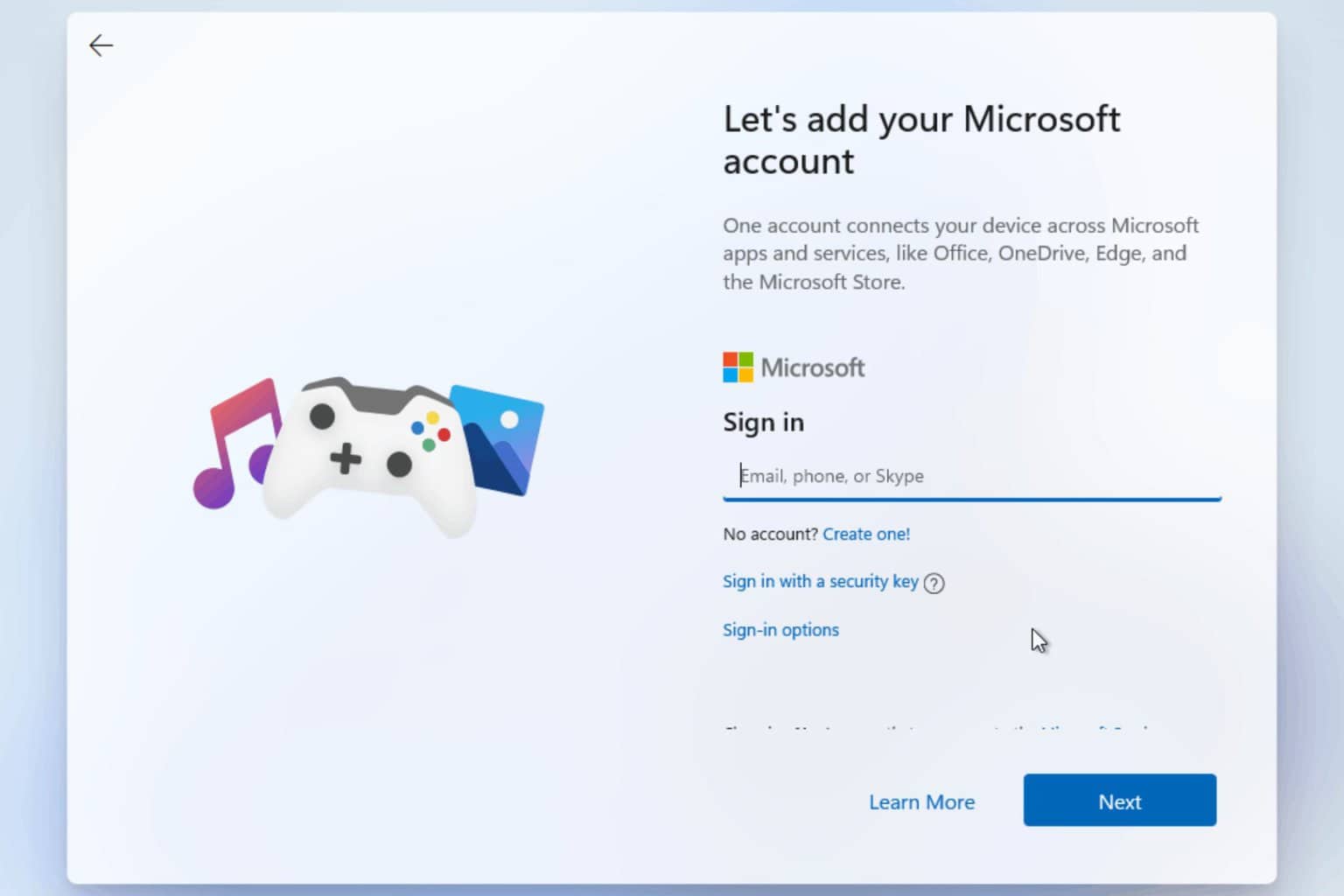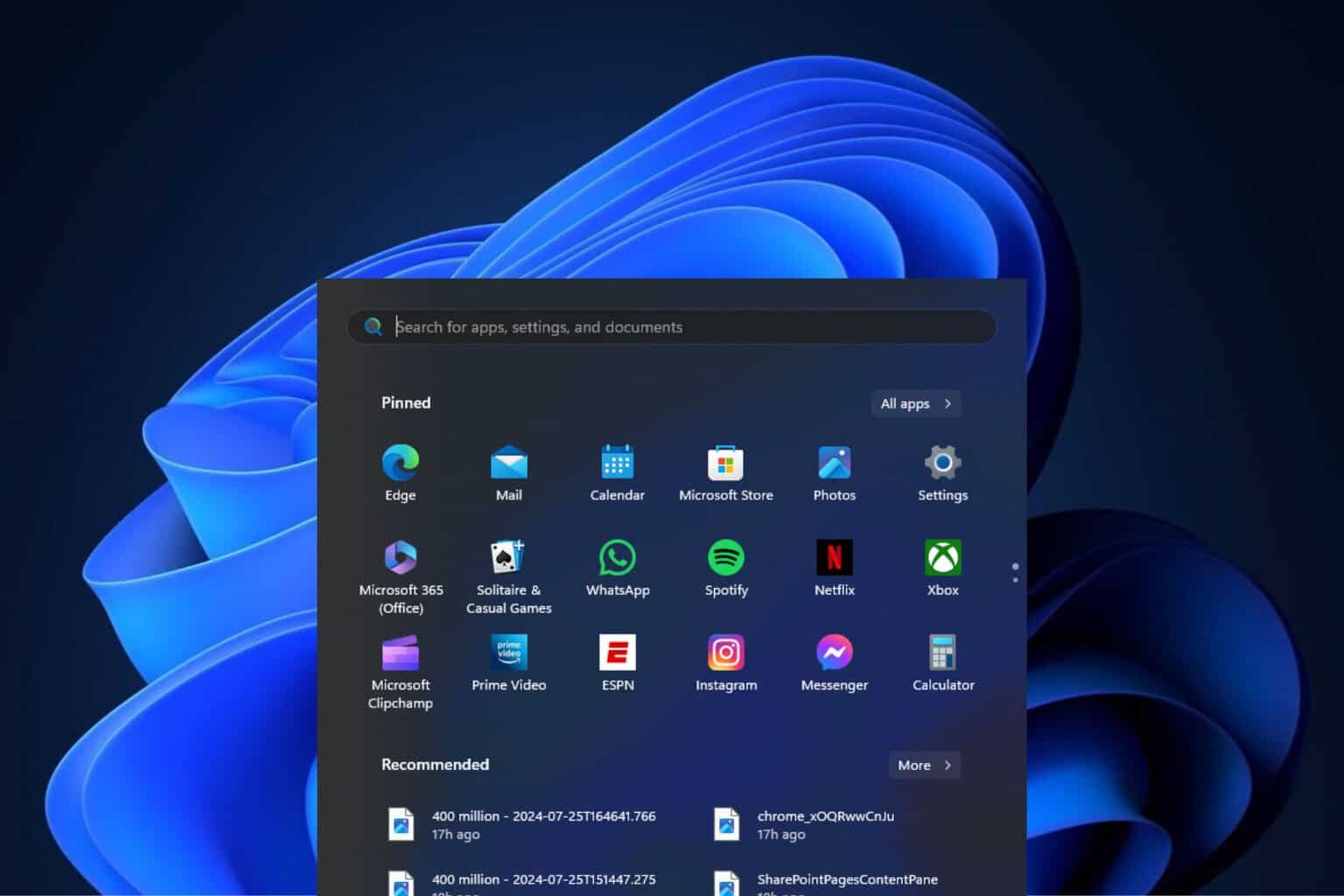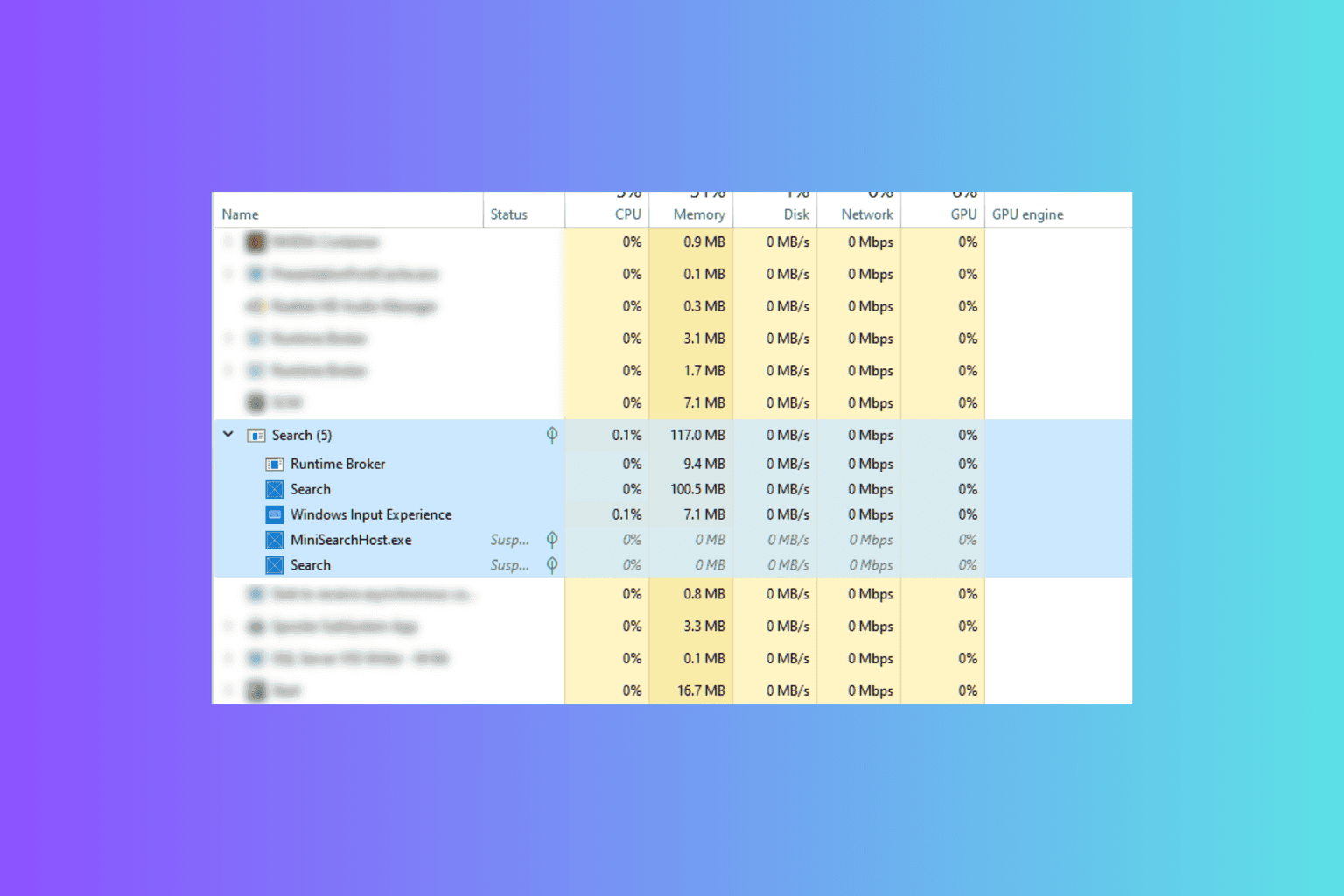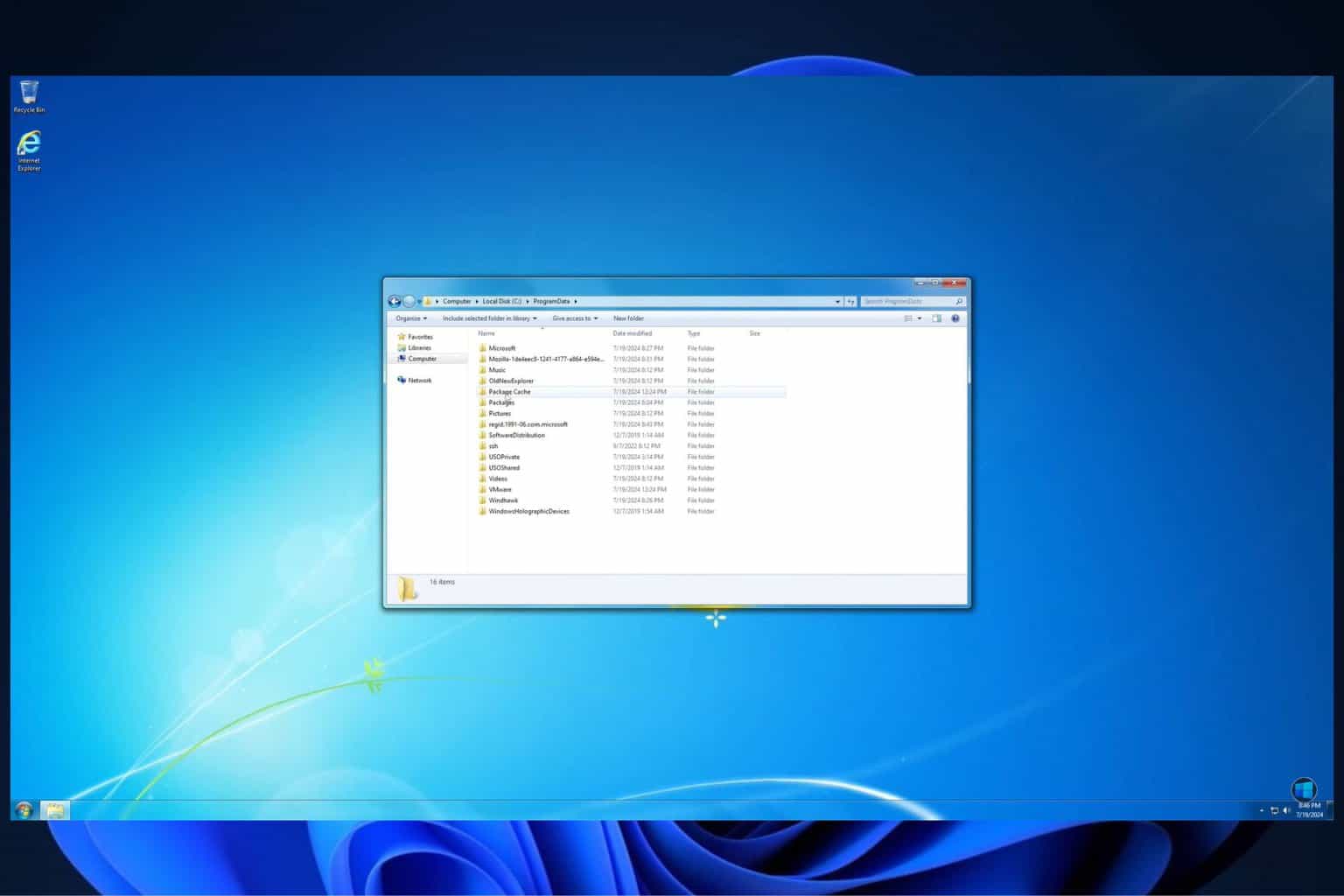Is Windows Losing Market Share? Year-over-year Comparison
Windows is losing users, but what does that mean?
12 min. read
Updated on
Read our disclosure page to find out how can you help Windows Report sustain the editorial team Read more
Key notes
- In the past 10 years, the operating system market has changed drastically.
- Windows is slowly losing users while macOS and Chrome OS are on the rise.

Microsoft Windows is one of the most popular desktop operating systems on the market, but many wonder if Windows is losing market share.
This is a complex question, and to answer that, we need to look back at the history of Windows and other operating systems to find out. If you want to learn more, we have a special guide on Windows 11 market share in early 2023.
So join us while we take a closer look and examine the Windows market share and its changes over the past years.
Is Windows on a decline?
In short, yes, Windows is slowly but surely losing its market share to macOS and Chrome OS in the US, according to StatCounter desktop market share. While it was a market juggernaut 10 years ago, it has lost some of its popularity.
Despite that, Windows is still the most used operating system in the United States and worldwide.
Is Windows still popular?
Yes, Windows is still incredibly popular and a dominating operating system. It’s the number one operating system in the world, and it’s going to remain that in the future.
According to the global market share by StatCounter, Windows is still the dominating operating system, followed by macOS.
Is Windows losing market share?
2013 – Incredibly poor Windows 8 adoption rate
In 2013, Windows had 82.91% of the market share in the United States, while macOS had 15.83%. With the release of Windows 8 in 2012, we would expect the users to make the switch, but that wasn’t the case.
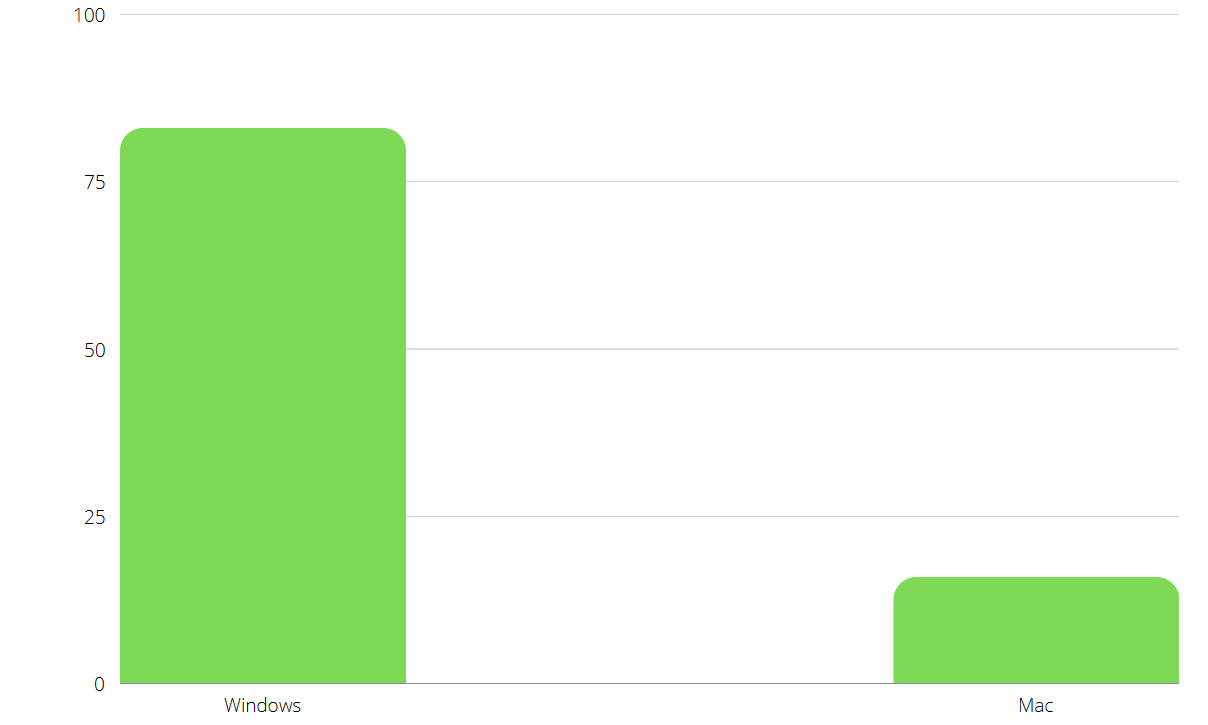
Windows 8 had 3.69% of the market share at the beginning of 2013. The operating system wasn’t well received by the users, and many didn’t like the removal of the Start Menu and increased focus on the touchscreen interface.
In fact, in early 2013, even Windows Vista and Windows XP had a larger market share despite being 10 years old. Windows 7 was the dominant operating system, with a 64.35% market share at the time.

It seems that Windows 8 didn’t achieve the desired success, and Microsoft was preparing to fix that with Windows 8.1 in late 2013.
To learn about the differences between Windows 8 and its predecessor, we suggest you check our Windows 8 vs Windows 7 article for an in-depth comparison.
2014 – Windows 8.1 overtakes Windows 8
At the beginning of 2014, Windows had 78.94% of the market share in the US, which can be attributed to the poor reception of Windows 8. Right about that time, Windows 8 would achieve its peak and start a slow downfall.

This was to be expected because Windows 8.1 update was released, and in May 2014, it overtook Windows 8 in terms of market share. To learn more about Windows 8.1, visit our Windows 8.1 feature guide.
However, Windows XP still had a larger share in 2014 than the new Windows 8.1, despite reaching the end of life in April of that year.
Windows 7 remained one of the most used versions, but its market share dropped to 61.12%.

Conversely, macOS had a small bump, reaching 17.6% of the market share. This could be attributed to the release of iMacs with 5K Retina display and the upcoming release of OS X Yosemite.
2015 – Windows 10 and 12-inch MacBook release
At the beginning of 2015, Windows had 79.42% of the market share but dropped to 73.96% in May of that year, probably due to the end of mainstream support of Windows 7 in January.

In 2015 Microsoft released Windows 10, and as a free upgrade from Windows 8, 8.1, and 7, it took the Windows market share by storm. By the end of the year, it overtook Windows 8.1, but it was still behind Windows 7.
On the other side, macOS had a 17.12% market share, which spiked to 21.58% in May following the release of the 12-inch MacBook. The device offered a Retina display, a fanless design, and a USB-C port, so it’s no wonder many users were eager to try it.
There was also one more competitor that tried to take a slice of the market share following the decline of Windows XP. That was Chrome OS, and even though it has been present for a while, in early 2015, it only had 1.15% of the market share.
If you never used Chrome OS, we have a great guide on how to download Chrome OS ISO and install it on your PC.
Speaking of Windows XP, many are wondering if is it possible to continue using Windows XP. And while that might be the cause, you’d be safer running Windows XP on a virtual machine.

2016 – Windows 10 to overtake Windows 7
At the beginning of 2016, Windows had 79.07%, but it dropped way down to 70.92% in October. This can be attributed to the end of support for Windows 7.
In early 2016, Windows 8.1 had just 14.16% followed by Windows 10 with 19.81%. Windows 7 was still the most used with 51.81%, but that changed by the end of the year.

At the beginning of the year, Apple had 15.17% of the market with macOS, but it rose steadily, probably due to the release of macOS Sierra and the updated MacBook Pro with Core M processor.
As for Chrome OS, it rose to 2.02% of the market share at the beginning of 2016.

2017 – The end of Windows 7
At the beginning of 2017, Windows had 75.1% of the market. Windows 10 overtook Windows 7 a few months ago, and they shared around 41% of the market.
Due to the end of support, Windows 7 was on its way out, and its market share will slowly drop over the coming years.
However, many wanted to keep using Windows 7, and we have a great guide on how to stay on Windows 7 forever, if you want to.
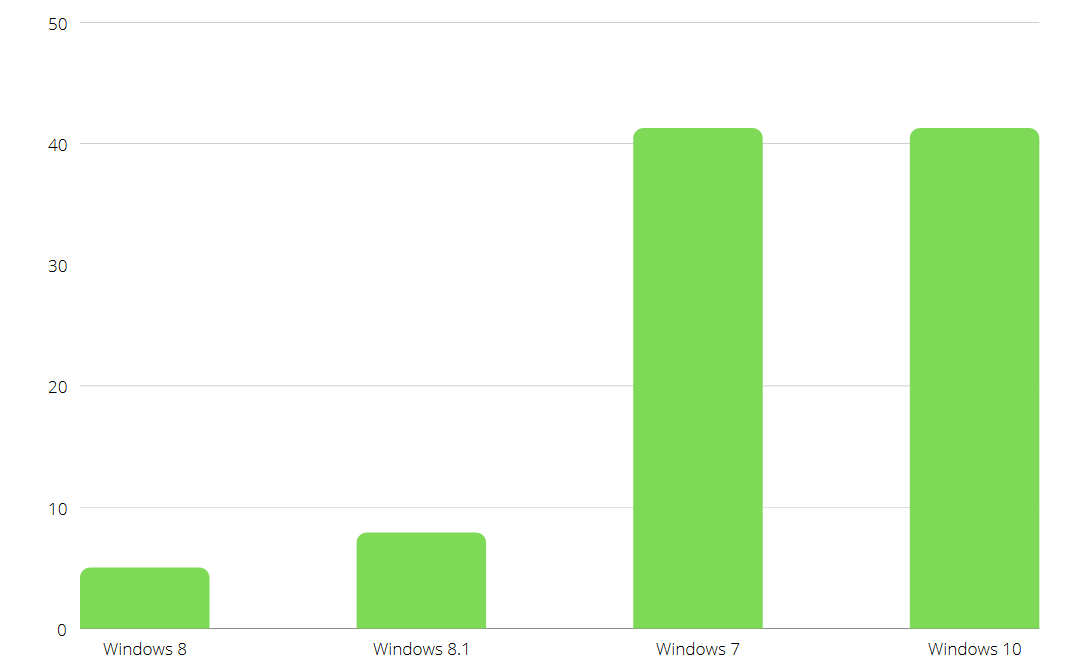
Windows received a small market share increase, probably following the release of the Creators Update for Windows 10, which was announced in April 2017.
Regarding macOS, it had 19.51% at the beginning of the year, with a tiny increase by the end. As for Chrome OS, it held 3.03% at the beginning of the year.

2018 – Slow rise of Chrome OS
Windows started 2018 with 74.4% of the market share, but it dropped to 64.18% in November of that year. Windows 10 had 62.11% by the end of the year, and Windows 7 had 27.28% following a constant decline.
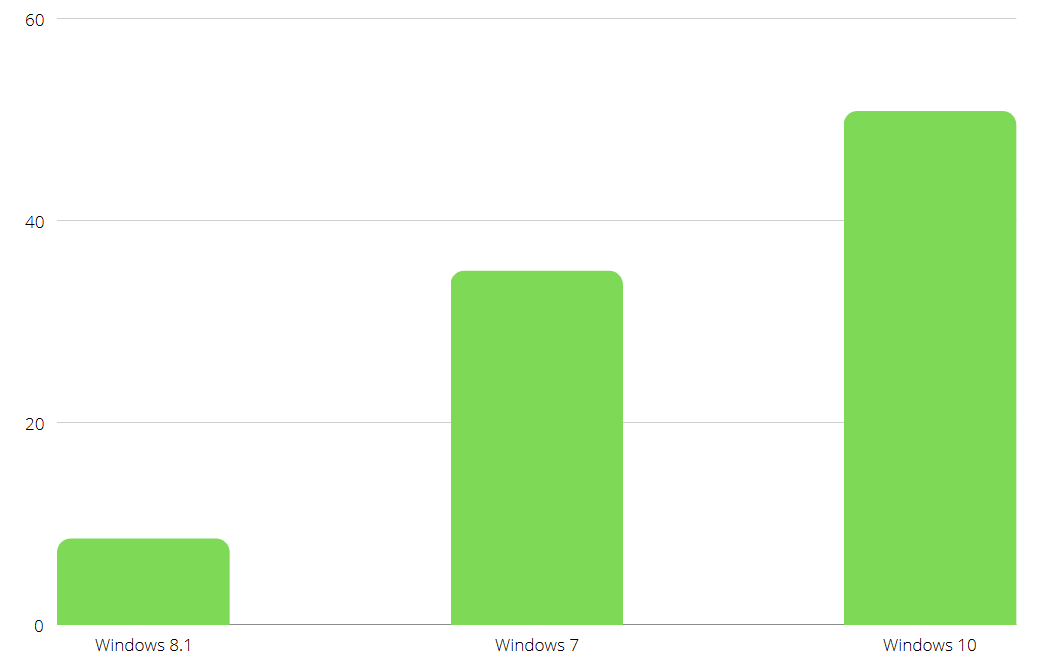
On the other hand, Apple had 20.26%, dropping a few percent by the end of the year. Chrome OS started with 3.26%, and by the end of the year, it had 5.06% of the market.
This can be attributed to the massive adaptation of Chromebooks in the education market due to their affordability and security. 60% of computers used in schools in March 2018 were Chromebooks, which kept rising by the end of the year.
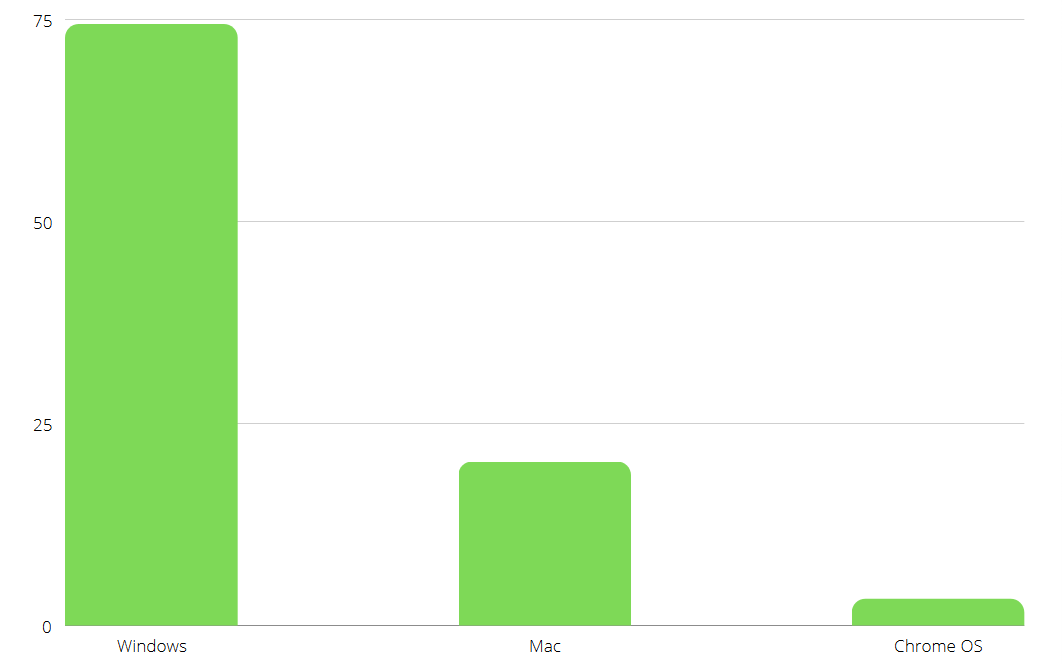
2019 – Apple releases Mac Pro
In early 2019 Windows had 68.85% of the market, following the rise after a massive drop in November 2018. By the end of the year, the market share dropped to 65.08%.

The popularity of Windows 7 was waning, and that’s expected after Microsoft’s announcement to drop security updates and technical support for Windows 7 in early 2020.
By the end of the year, Windows 7 had 17.1% of the market, while Windows 10 had 75.42% in December of that year.
Apple started that year slowly, with 18.4%, but by the end of the year, it reached 24.89%. That was somewhat expected after the release of macOS Catalina in October. The same year Apple released a new Mac Pro workstation that was well-received by tech professionals.
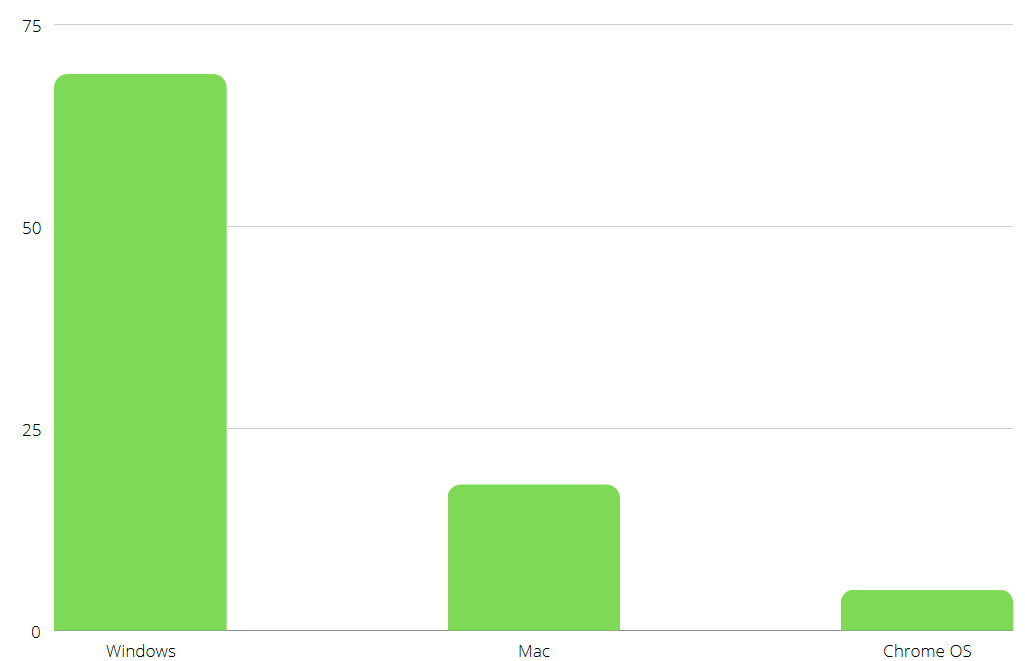
Regarding Chrome OS, its market share rose to 6.4% by the end of the year.
2020 – Apple releases M1 chip
At the start of 2020, Windows had 65.14%, and by the end of the year, it dropped to 61.13%. Windows 10 dominated the market share with 83.99%, while Windows 7 was at a record-low 9.97%.

The year 2020 has been particularly challenging for Windows due to the global pandemic. With most of the workforce and students working or studying remotely, the market shifted.
According to IDC, Windows lost some of its popularity to Chrome OS. The operating system from Google has slowly but surely become associated with education, so it’s no wonder that many students opted for Chrome OS devices.
Apple also saw a massive jump in market share, and it went from 25.19% to a record 30.62% by the end of the year. This is expected with the launch of the line of M1 devices from Apple in 2020.
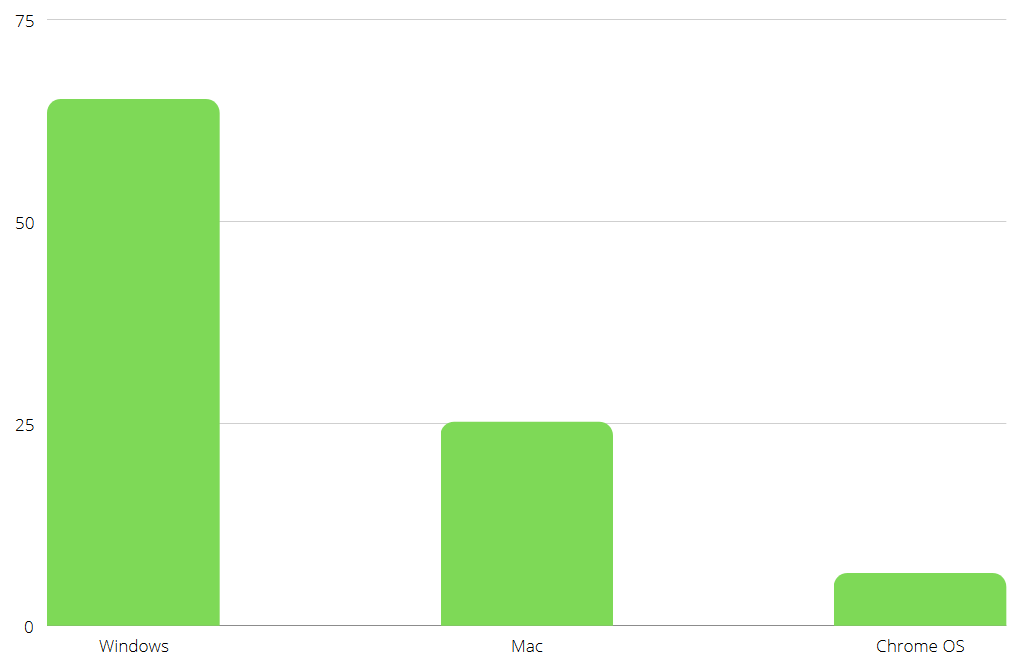
These devices used the M1 ARM chip and offered amazing performance, low power usage, and fanless design, making them the best buy during the 2020 pandemic.
2021 – Release of Windows 11
Microsoft Windows had 61% of the market in 2021, and by the end of the year, it received a minor jump at 0.67%. Regarding the individual operating systems, Windows 10 has achieved absolute dominance with 89.49%.
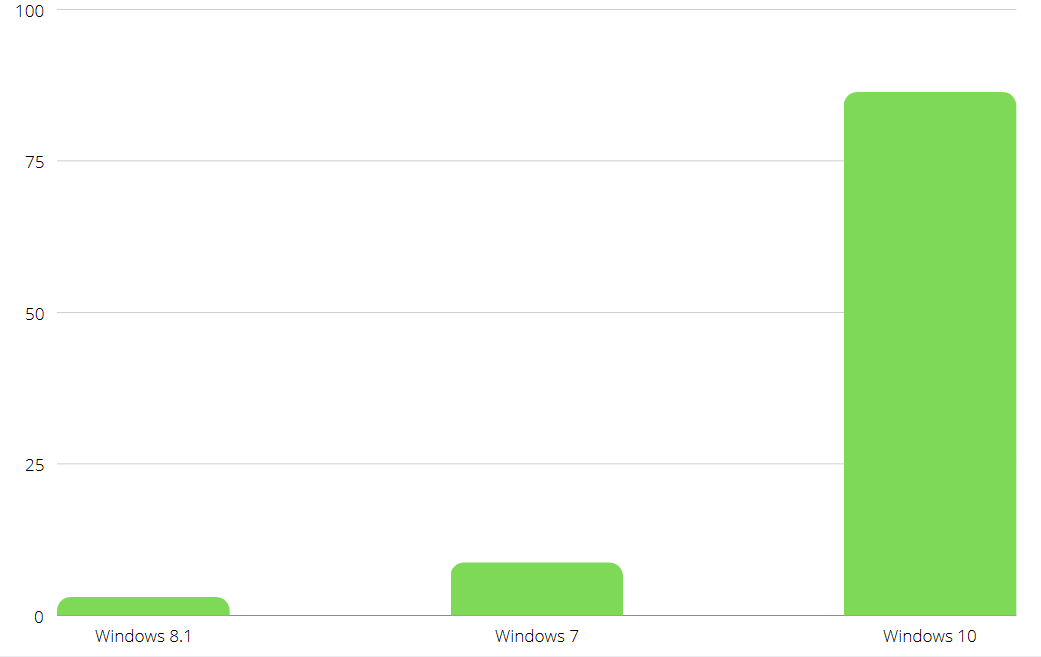
Windows 11 was just around the corner, and it was released in October 2021 with a mixed reception. The new operating system brought a new interface, as well as new hardware requirements.
To learn more, read our Windows 11 review and check out the list of best Windows 11 features you need to try.
Many of these new Windows 11 requirements made many PCs unable to upgrade, and Microsoft’s strict policy on being able to use Windows 11 only on approved hardware alienated some of the user bases.
Many PCs that were just a few years old weren’t eligible to upgrade to Windows 11, and that caused a negative reaction from the users.
macOS had 29.96% at the start of the year, but it lost 2% by the end of it. Chrome OS got 6.48% by the December of 2021.
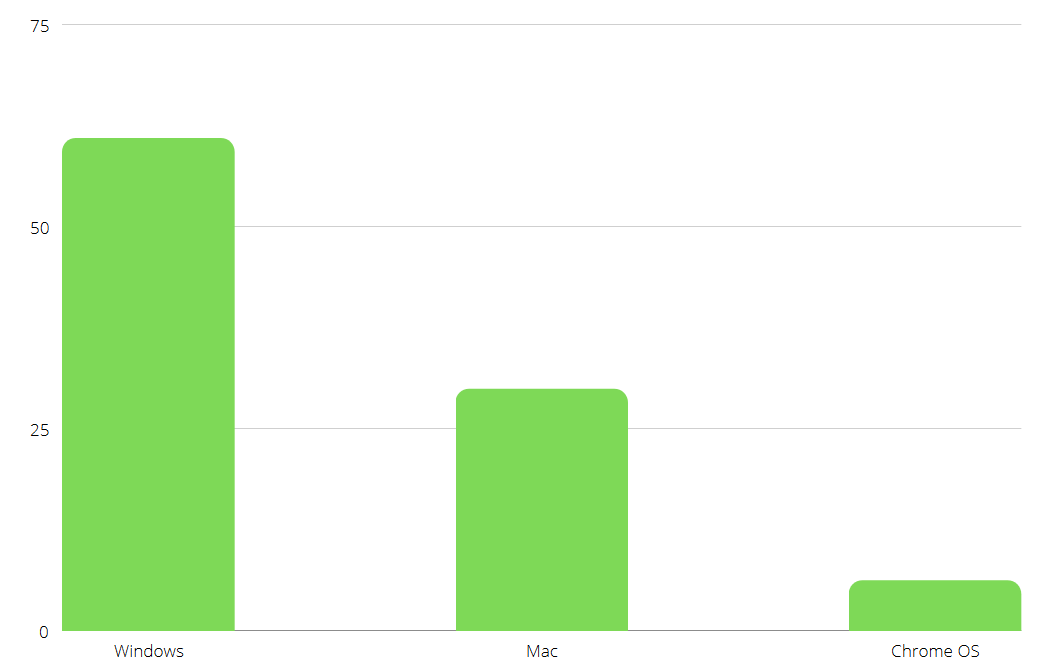
2022 – Windows 11 is on the rise
Microsoft Windows had 61.33% of the market at the start of 2022, and we even saw a rise up to 67.56% in June, followed by a drop to 63.23% in December.
With Microsoft’s push to make Windows 11 the dominant operating system, by the end of 2022, Windows 10 dropped to 69.7% from 86.69%. On the other hand, Windows 11 saw a jump from 3.1% to 20.88% in the same year.
As for macOS, it achieved a drop to 25.52% in December. And the same goes for Chrome OS, which had 6.21% by the end of the year.
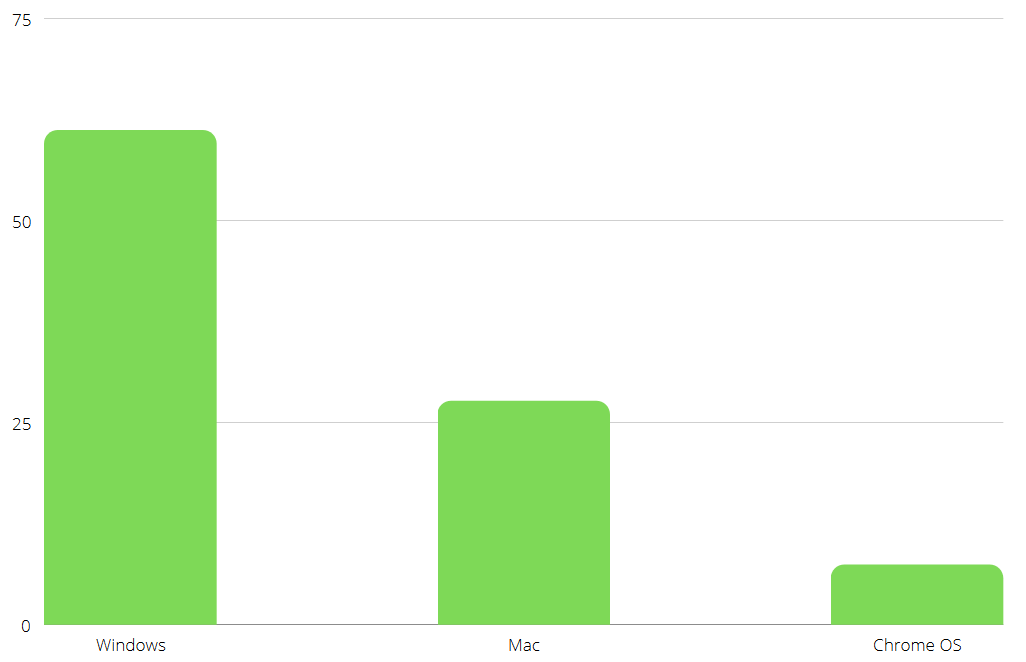
2023 – Rise of macOS and M2 processors
In the current year, Windows sits at 56.02% in March, while macOS has a 30.41%. This could be related to the release of M2 MacBook Air in 2022 and the release of macOS Ventura in the same year. Regarding the Chrome OS, it has 7.96%.

Regarding the Windows market share, in March, Windows 10 had 69.23% while Windows 11 had 26.3%. Surprisingly Windows 7 is still present with 2.57% of the market share.
There are also reports that Windows 11 holds about 10% of the market share, and we don’t doubt that number will continue to rise.
Speaking of Windows 11, should you upgrade from Windows 7? Our Windows 7 vs Windows 11 guide will explain everything you need to know about the two operating systems in detail.
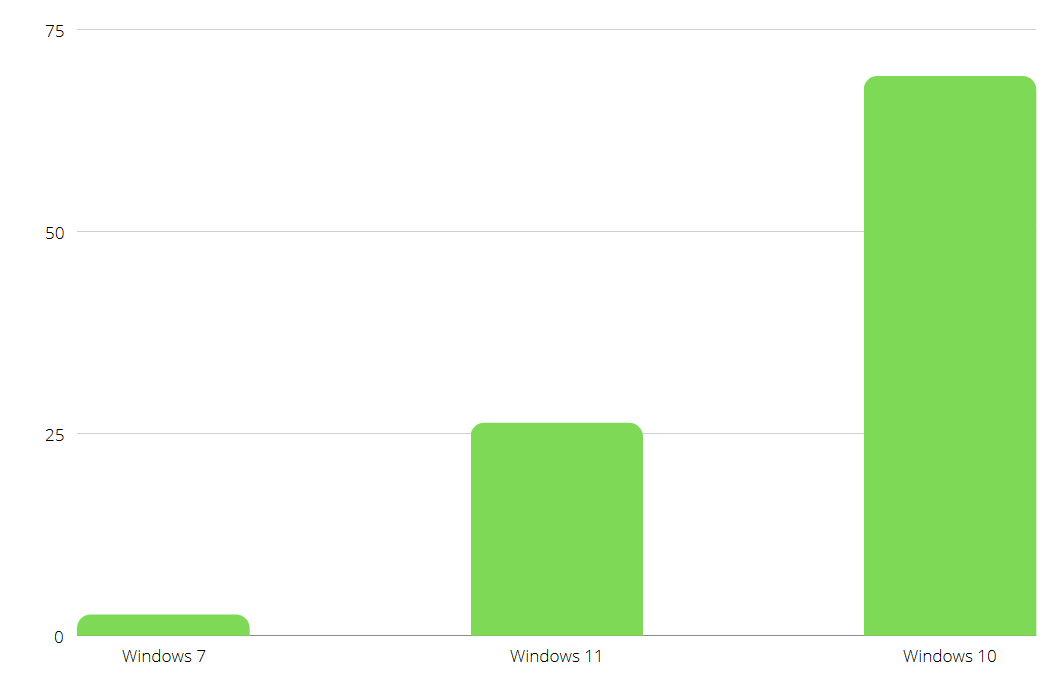
Keep in mind that all this information was for the United States. As for worldwide operating system market share, the situation is slightly better, and Windows has 69.4% while macOS has 17.21%. Chrome OS has only 3.23% worldwide.
Why is Windows’ market share falling?
The drop in Windows market share in recent years can be attributed to the release of the new M2 series, and we noticed the same jump when the M1 series was released.
These chipsets are focused on performance with longer battery life, so it’s no wonder they are capturing the attention of computer buyers in the United States.
This series was released during the pandemic, and with the increased need for a personal computer for remote work or school, many decided to go for the new Mac series or Chromebook.
So why are so many users switching to Chrome OS? Our Windows 11 vs Chrome OS guide might shed some light on that.
Meanwhile, Microsoft is pushing for Windows 11 upgrade, an upgrade that many didn’t expect or want, and to top it off, many of them won’t be able to experience it because of the incompatible hardware.
This is why macOS or Chrome OS might seem a better option for some users.
Will Apple overtake Windows?
Apple has gained massive popularity over the past decade in the United States and has doubled its market share in the last 10 years. With Windows losing its users, Apple can overtake Windows, at least in the US.
If that happens, it will probably take at least 10 years or more for Microsoft and Apple to have the same market share, so for the time being, Windows will remain a dominant OS in the US.
The same applies to the worldwide stage, where Windows has a noticeably larger market presence than Apple.
Are Macs better than Windows?
This depends primarily on your needs. Macs have superior build quality and amazing hardware, but that comes at a price.
In addition, Mac computers are a closed system, so you can’t tinker around with the system and software like Windows. This means you can’t upgrade hardware on your own and customize your computer as you like.
Many applications aren’t even available for macOS, although there are many great alternatives. Gaming is also a big issue; if you’re a gamer, Windows is a far superior choice.
While Macs work out of the box and offer great performance, the lack of hardware customization, high price, and subpar gaming support make Windows a better option.
To learn more, we suggest reading our Windows 11 vs macOS guide and learning about the differences in detail.
If you’re eager to try macOS, we also have a guide on dual-booting Windows 11 and macOS, so you might want to check it out.
Will Windows become obsolete?
No, Windows won’t become obsolete, it’s a dominant operating system on desktop PCs, so we doubt that will happen in the near future.
However, your current version of Windows will become obsolete, and that’s inevitable. Newer versions are constantly being released, and just as Windows XP became obsolete when Windows 7 came out, the same will happen to the version you’re currently using.
Is 2025 the end of Windows?
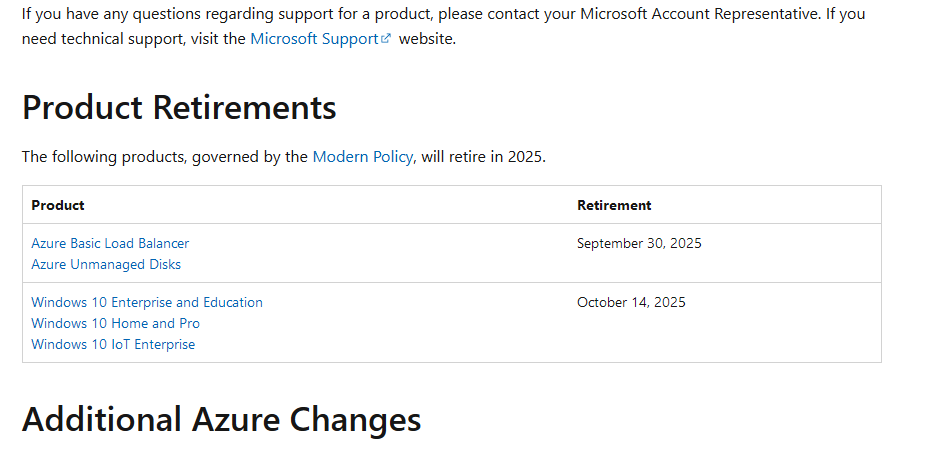
No, 2025 is not the end of Windows, and newer versions will be released. However, Microsoft plans to retire Windows 10 in October 2025 to push users to upgrade to Windows 11.
2025 will be the end of Windows 10, but with Windows 11 released and with Windows 12 leaks, we’re positive that Windows is here to stay.
We hope this guide has answered all your questions regarding Windows and its market share.
Did we miss any important information? Let us know in the comments section below.

